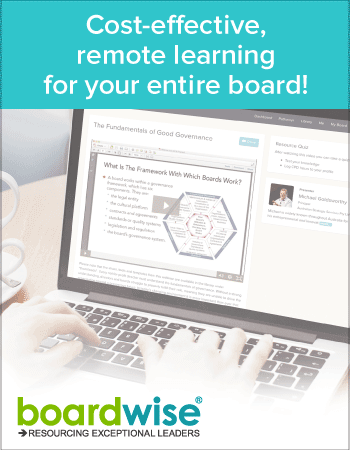organisational-development
Four Key Skills in Becoming a Great Media Performer
Published: October 12, 2015
Read Time: 5 minutes

When you’re called upon to be a spokesperson for your organisation at a board or executive level, being accomplished and assured in front of the microphone or camera is a mainstay in your skillset, and can consolidate your presence as a figurehead. Crucially in times of crisis, a skilled media performer can highlight an organisation’s good governance. Crises aside, a well prepared spokesperson can help successfully present an organisation’s achievements to the community.
Here are the four key things you need to know to be a great media speaker.
Don’t treat your interview like a conversation.
We don’t prepare for conversations, but you must prepare thoroughly for an interview. Think of it as an opportunity to deliver a message. That way, you’re instantly freed from the burden of worrying about what a reporter might ask. It doesn’t matter what questions they put – you already have your story front-of-mind and ready to tell.
Interviews are beguiling, because they look and feel like a conversation. In the run-up to an interview, you’ve built a rapport with the reporter and a level of trust. But the whole mood changes once the microphone is on. The reporter is obliged to hold you to account and test your views. They’ll be asking tough questions. You’d better be prepared.
You need to determine your message – what you want your target audience to believe. Anticipate questions, and prepare clear responses. Be assertive and brave enough to keep repeating your key points. Prepare for some tough questions and think about how to get back to your message. And do this while remaining civil – play the issue, not the reporter.
If you don’t appear in front of the microphone regularly, you may find it an intense experience at first, even confrontational. Prepare properly, and that intensity can help you present and articulate your views in an engaging way. Channel it, and let it amplify your performance.
Be prepared to tell your story.
It sounds simple, and it is. News copy starts with what’s new or most important, and finishes with what’s least important. So that’s how you must tell your story. An audience won’t wait to hear your great conclusion or punch line – it wants to cut to the chase. Get their attention right from the start, and you’ll keep them engaged.
Think of your story like a really good sandwich – two oven-fresh slices of bread embracing a delicious filling. For your bread, think of a couple of concise, memorable and quotable points – these will be used as sound-bites. For your filling, think of an engaging and emotional story. Then put the sandwich together. Deliver your message, tell your story and deliver your message again. The repetition makes your points or messages memorable for everyone.
Don’t bemoan the fact that the media wants a sound bite or ‘grab’. Embrace it. Prepare it, write it and deliver it, clearly and assertively.
Your story, your ‘sandwich filling’, is an illustration of your message. For maximum impact and audience engagement, it should be personal – an anecdote illustrating the impact of your message.
Good media content always makes people feel something. Your story and your message will be remembered if they have strong human interest.
Always get back to your story
Reporters won’t always let you set the agenda. They’re trained to focus on your ‘pressure points’, things you would prefer not to talk about.
Reporters will target you personally if you have integrity issues or any sort of track record. They will target your organisation’s past actions or perceived biases. They will also target your sector and ask you to comment on everything from a lack of resources to government policy. Reporters often research your news history before interviewing you. You should be prepared.
Anticipate potential pressure point questions and have replies ready. Or be prepared to ‘bridge’ straight back to your story –
- That’s not for me to comment on, but what I can say…
- That’s interesting, but what’s more important here…
- That’s an issue for others, but what I can outline for you today…
Reporters often repeat questions. Every time they do so, it’s an opportunity for you to deliver a response that is even more engaging and convincing than your last answer. That helps you influence your target audience. It also helps the reporter present you in your best light when the interview is edited and republished across other media platforms.
Be engaging
‘Good talent’ is how reporters refer to the best interviewees. Good talent ‘cuts through’ to the essence of the story. Interviewees with this ability are well prepared, have a clear message, a great story and can deflect pressure point style questions. They have their audience’s complete attention.
As well as a good story, there are natural story-telling tools which you can use to your advantage – the pace of your speech, and your phrasing; your body language and facial expression; and the volume and focus of your voice.
An easy place to start is to increase your voice volume when you speak. This helps you emphasise important points, activates appropriate body language and animates your performance. If you speak in normal conversational tones you will appear laconic in the media.
Do all of this, and you will be on most reporters’ speed dial. You’ll be recognised as someone who understands the demands and constraints of media broadcasting, and as someone who will instinctively help a news team put a story across – a reliable and accomplished spokesperson.
Share this Article
Recommended Reading
Recommended Viewing
Author
-
Principal Consultant
Good Talent Media
- About
-
Founder and Director of Good Talent Media, Tony Nicholls is an accomplished journalist who has held roles over the last ten years with the ABC, SBS and Network Ten, covering thousands of news stories across Victoria, Australia and in the international media.Tony has seen first-hand how the media landscape has evolved, changing the roles of journalists, politicians and media spokespeople. His deep experience of this demanding new digital media age places him ideally to deliver the up-to-the-minute skills and awareness required to achieve presence and results. As Director of Good Talent Media Training, Tony conducts media training personally.
Found this article useful or informative?
Join 5,000+ not-for-profit & for-purpose directors receiving the latest insights on governance and leadership.
Receive a free e-book on improving your board decisions when you subscribe.
Unsubscribe anytime. We care about your privacy - read our Privacy Policy .







